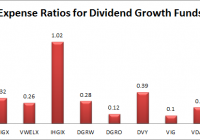VWELX: This 86 Year Old Fund Is Still An Ideal Choice For Retirement
Summary Vanguard Wellington is the first balanced fund in the U.S. having launched in 1929. The fund has ranked in the top 10% of its Morningstar peer group over the past 5-, 10- and 15-year periods. The fund has a beta of 0.65 compared to the S&P 500 while outperforming the index over the long term. Wellington held up remarkably well during the 2000 and 2008 bear markets. In a world where there are literally thousands of funds and ETFs available that cover almost every niche, sector and style available, sometimes it’s the most tried and true investment vehicles that still remain the best choices. In the case of the Vanguard Wellington Fund (MUTF: VWELX ), we’re talking about literally the oldest balanced mutual fund in the country. Launched all the way back in 1929, Wellington looks to maintain a balance of roughly two-thirds of assets in conservative large cap stocks and one-third of assets in a mix of high quality bonds. It’s this type of asset allocation that makes for an ideal core holding in many retirement portfolios. Historically, Wellington has provided exactly what retirement investors should be seeking – above average returns with below average risk. With a current beta of 0.65, you’d expect the fund to return about two-thirds of the SPDR S&P 500 Trust ETF’s (NYSEARCA: SPY ) return but over the past 20+ years that hasn’t been the case. VWELX Total Return Price data by YCharts Looking at the past 2+ decades of history is especially appropriate because it takes into account both bull and bear market environments. The fund has performed about how one would expect – outperforming the S&P 500 in a down market but trailing in an up market. The fund’s risk minimization strategy proved especially effective during the Nasdaq bubble providing a relatively steady market performance given the economic environment. While the chart above doesn’t illustrate Wellington’s performance during the financial crisis particularly well but you can see below how well the fund held up. VWELX Total Return Price data by YCharts While the S&P 500 dropped around 55% from its 2007 peak, Wellington was down about 35%. That’s roughly what you’d expect considering the fund’s 60/40 allocation but the fund’s long term performance has been exceptional. Over the last 10 years, the overall performance of Wellington and the S&P 500 has been almost identical. Using a more apples to apples comparison, Wellington has also outperformed the Vanguard Balanced Index Fund (MUTF: VBINX ) – a fund with a 60/40 stock and bond allocation – during the same 10 year period. Morningstar drops Wellington into the Moderate Target Risk bucket. While the fund has returned 8.2% per year since the fund’s inception, it has consistently ranked at the top of its peer group. Wellington ranks in the top 6% of its peer group over the past 5-year and 10-year periods and ranks in the top 4% in the past 15-year period. It’s this type of risk-managed performance history that retirement investors should be seeking out. Retirement income investors will also appreciate the fund’s 2.43% yield. The fund has a few dividend champions among its equity holdings and the bond holdings are almost entirely high quality corporate and Treasury securities ensuring that the fund’s dividend is secure and reliable. Conclusion I’m a firm believer that in the case of most retirement investors, simpler is better. Sophisticated investors may feel comfortable building a more complex portfolio using stock, sector ETFs, etc. but for those who want an all-in-one long term holding that they can just establish and forget about, it’s hard to imagine someone doing much better than Vanguard Wellington. The combination of strong long term performance, risk minimization and low costs make this an ideal core retirement holding even if it’s not as exciting as some of the newer niche products hitting the market today.
